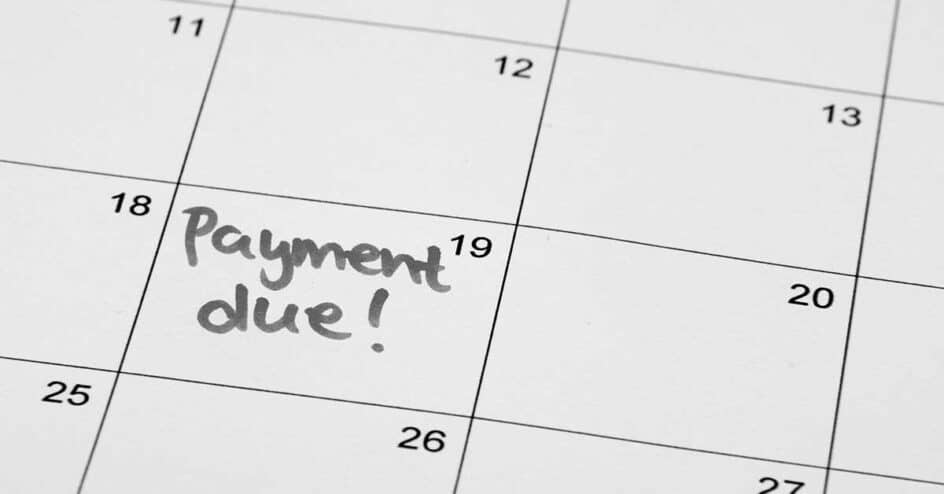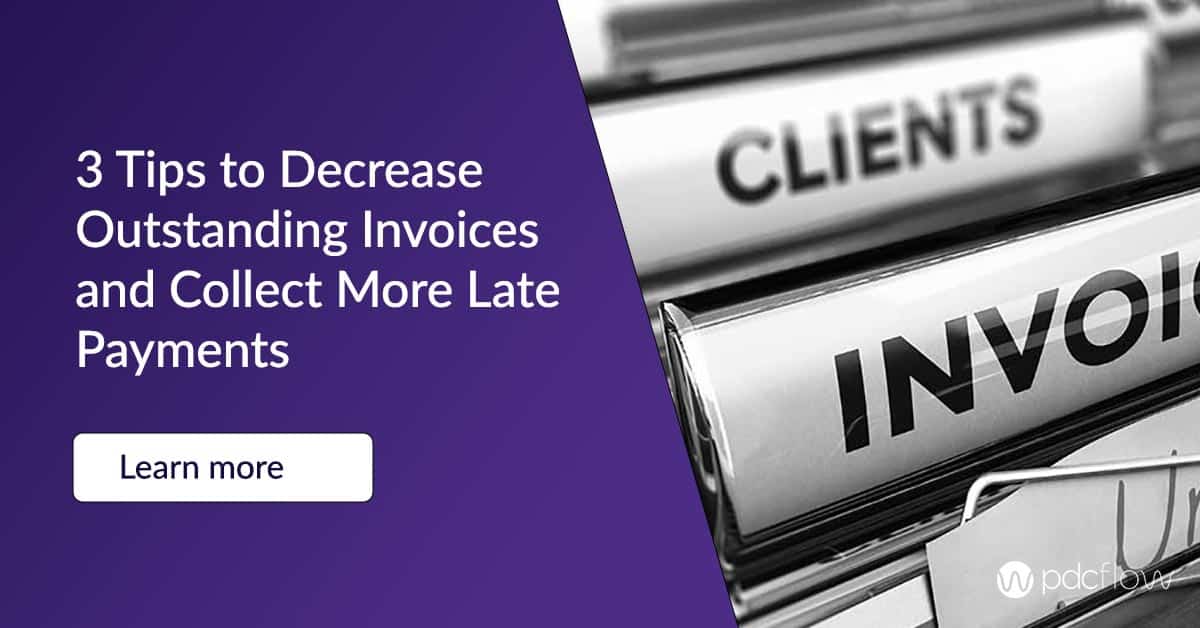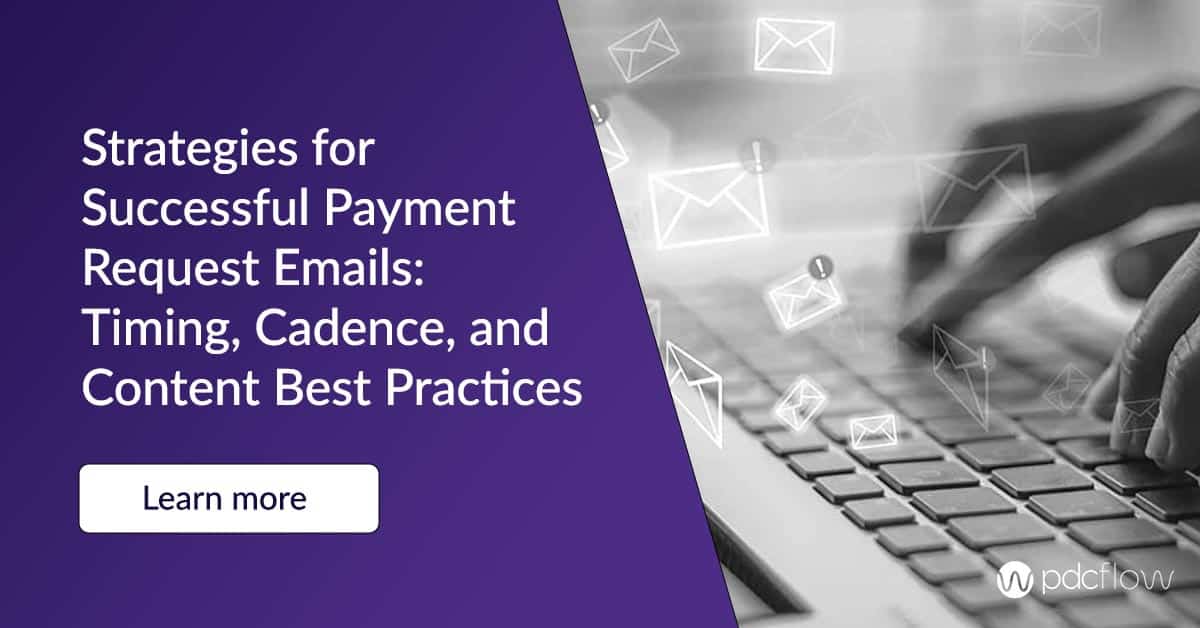Payment reminders are the simplest, most flexible solution to reduce late (or delinquent) payments. So why aren’t businesses taking full advantage of this easy, effective tactic?
Some business owners are nervous about new software that requires extensive training to launch. Others are still operating on manual or paper reminders that don’t reach customers before their payment due date or come in a format consumers dislike or ignore.
With the current accelerated rate of technology adoption, this may be one of the best times to explore how an overdue payment reminder system can work for you and your business.
Discover how payment reminders can transform your approach to billing while making the process more efficient and customer-friendly.
Here are ten reasons you should create a billing reminder system or update your current policies and procedures to include a payment reminder plan.
1. Reduce Manual Work with Automated Payment Reminders
Many small to medium AR teams and businesses use manual reminders by telephone or send paper statements by mail. This strategy is slow and time-consuming for your staff.
Call blocking measures and spam calls are making it hard to reach people by outbound phone calls. Even if your call isn’t flagged or blocked, most consumers will ignore a phone call from a number they don’t know.
The best solution is to send payment reminders that cater to customer preferences.
If a customer doesn’t like phone calls, you should be able to offer automatic payment reminder emails and text messages. This type of system serves customers the way they prefer, while simplifying office workflows for your agents.
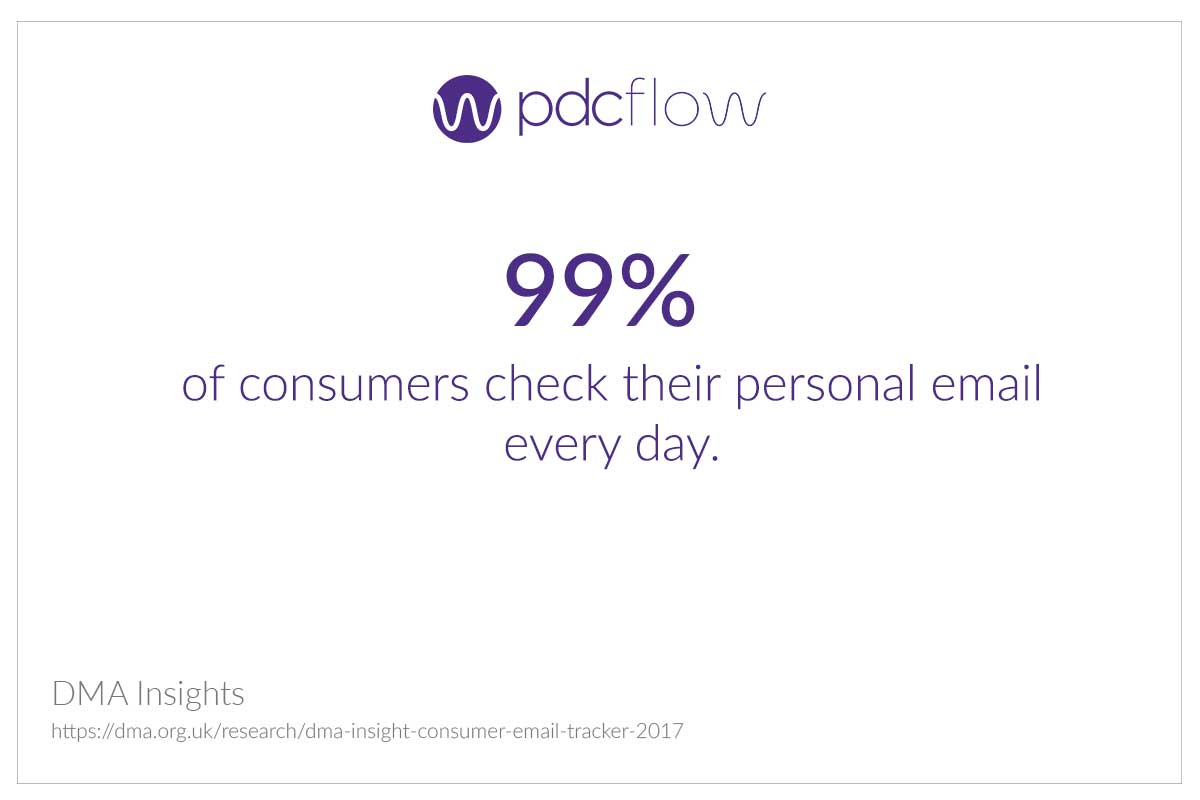
2. Increase Timely Payments
The majority of customers don’t mean to ignore a bill. Instead, other priorities in life usually take over. Late payments aren’t surprising – especially among companies requiring a large time gap between service, invoicing, and billing due dates.
The wider the spacing between these events, the more opportunities for people to forget a due date or even that they owe you money.
Sending personalized, friendly payment reminders not only encourages timely payments but also maintains a positive relationship with your customers.
3. Decrease Recurring Payment Schedule Errors
Many recurring payment schedules are tied to a debit or credit card. What happens when your customer’s card expires before a payment is processed? What if a customer experiences a financial hardship you’re unaware of?
Life moves fast. Customers could be dealing with any number of issues from one payment to the next. Reminders nudge people to reach out and update card information, ask about financial aid options, or change their schedule to work with their new circumstances.
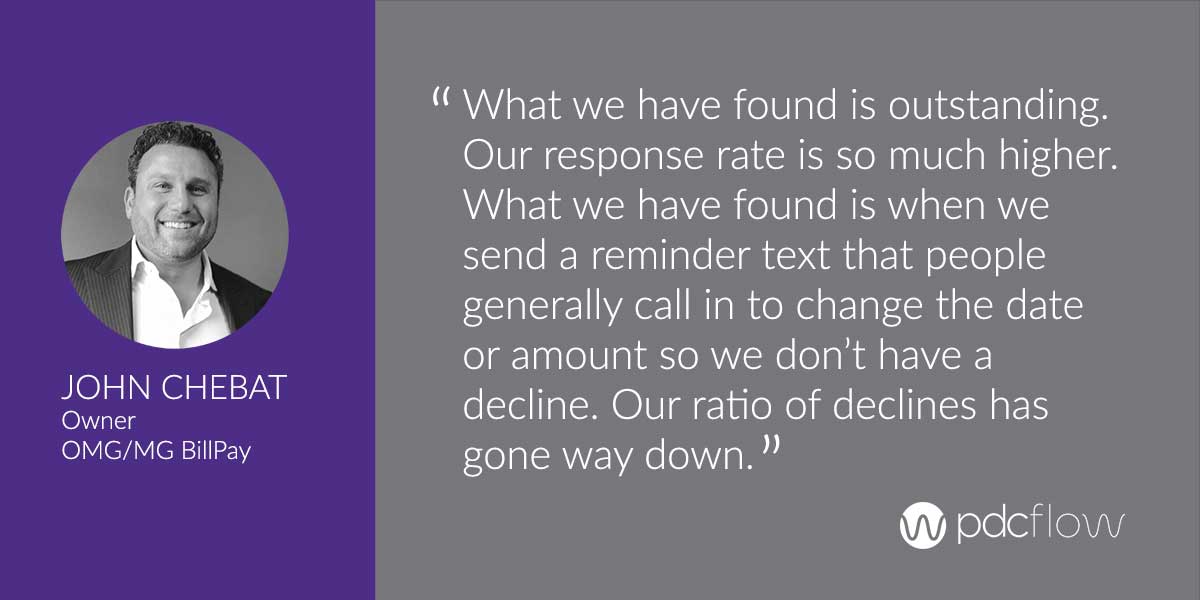
4. Provide Better Customer Service
Catering to consumer preferences and offering greater convenience have both been trending in business for years. Sending payment request emails or text reminders to your customers gives them a simple way to make the buying and payment process faster and easier.
This digital communication strategy prevents uncomfortable misunderstandings with customers throughout their billing cycle. Surprise billing is not a good idea and no one wants to be told they are behind on a payment.
Consumers who are told they’re late on a bill without being warned are bound to be unhappy. Friendly reminders with the amount owed and payment terms keep customers informed, satisfied, and on time with financial obligations.
5. Boost Revenue Through One-Time Campaigns
If you haven’t addressed outstanding payments in the past, it’s time to clean up your accounts. Creating a one-time payment reminder campaign for late payments is a great way to capture extra revenue.
This type of campaign can also help you pinpoint customers who are experiencing financial hardship or other personal roadblocks to payment.
Clearing these late payments boosts your bottom line, cleans up your records, and gives you insight into future accounts with similar patterns of late or nonpayment.
One approach to take to your reminder campaign is segmenting groups by how late their payments are in an accounts receivable aging report, tailoring payment reminder messages to each depending upon the urgency for payment.
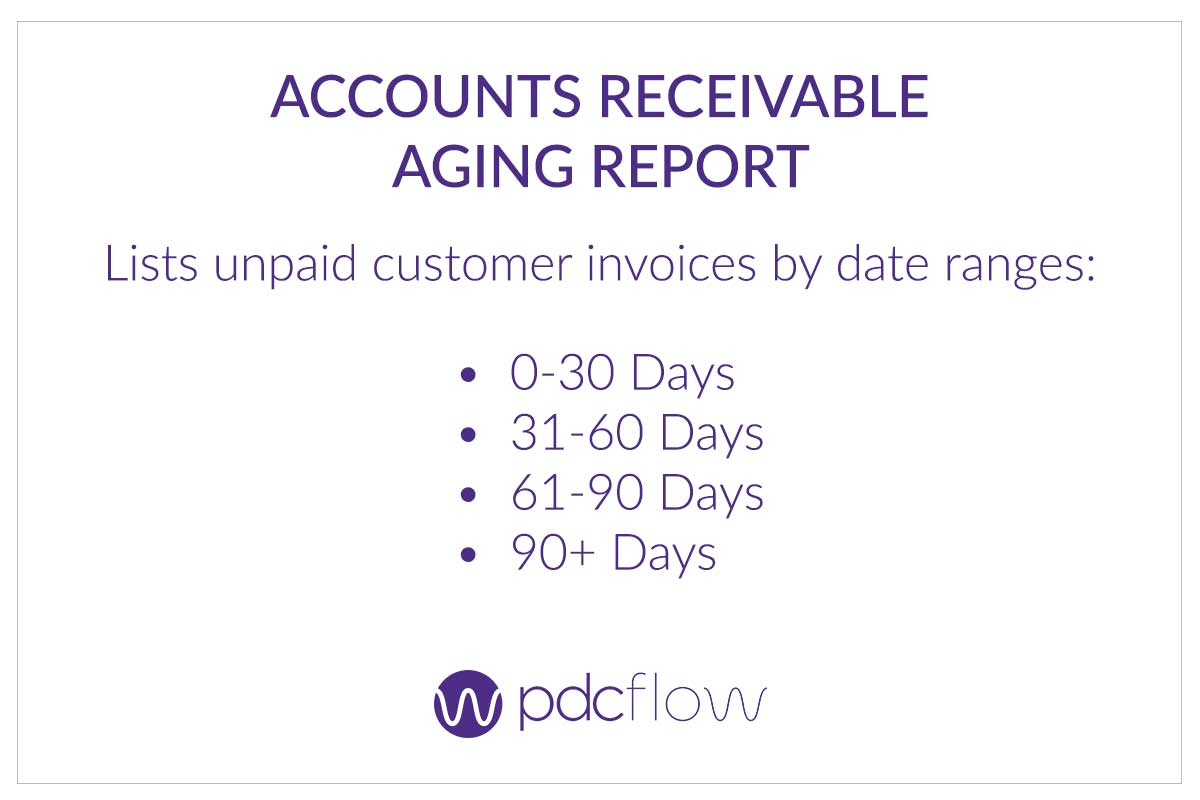
6. Increase the Bottom Line With Proactive Use
A one-time campaign will clean up your system but it won’t stay organized for long if you don’t continually use reminders. A boost to your revenue after a one-time campaign is good.
A higher, more reliable revenue stream all year long is better.
A proactive approach to payment reminders stops issues before they happen. Create a reminder schedule for all payments going forward to avoid future unpaid invoices.
7. Support Regulation E Compliance Practices
Regulation E applies to any entity that uses Electronic Funds Transfers (EFTs) to accept payment. Nearly every business takes EFTs for at least a portion of their payments, so owners need to understand how to comply with Regulation E.
If your company offers recurring payment schedules to help consumers pay off their bills, you must receive authorization from customers before the first payment installment.
The tools you use to accept fast, secure electronic authorization both help you comply with Regulation E and double as a reminder system for future payments.
Using the same tools for compliance and service helps you get more out of your investments and streamline workflow best practices.
Professional Payment Reminder Considerations
8. Easy Implementation
Email and text reminders shouldn’t be hard to add to your process. Many digital tools, like PDCflow’s Flow Technology, can be up and running in as little as a day.
If you shop wisely, you can find the right addition to your tech stack to improve staff productivity and simplify the customer journey.
9. Build Brand Credibility
Many businesses drag their feet on new initiatives for fear of day-to-day disruption. The problem is, the longer your company waits to adapt, the further you’ll fall behind your competitors.
Customers put their faith in you when they agree to use your company. They believe you will do what you say and that account resolution won’t be needlessly difficult.
Internally, employees trust management to make smart, helpful decisions that create net gain for the company. They want faster, easier workflows, simplified training, and automated options that take work out of their hands.
Delivering on your expectations is the mark of a good organization, and will naturally enhance your brand in both the short and long term.
10. Reduce Collection Outsourcing
Payment reminders are not hard to implement. Consumers like them and employees want simpler ways to work. Sending notices keeps more accounts in good standing and eliminates a good portion of payments that would otherwise be late.
With those benefits and fewer accounts ending up delinquent, companies may no longer need to use a third-party debt collection agency to recover money owed.
Choosing the Right Payment Reminder Tool
Technology is a huge part of life. Selecting the right vendor partner that understands your struggles and has a customer-centric approach to business can make payment reminders fast and easy from set up, to training, to end-user experience.
PDCflow’s Flow Technology is a secure, compliant, payment communication tool that fulfills many essential business needs.
Through Flow, you can:
- Create automated payment reminders along with a link to payment, making it as simple as possible to pay.
- Take advantage of consumer preferences by sending email or text reminders to consumers.
- Set a single payment for a future date along with an email or text reminder and payment link.
- Pinpoint late or delinquent payments with customized reminder messaging and a payment link.
Need help getting started on your payment reminder notices?
Download Templates
Friendly Payment Reminder Email Templates
Use these professional payment reminder template ideas (created in our software) to help you get started.
FIRST PAYMENT REMINDER: ONE WEEK PRIOR TO PAYMENT DUE
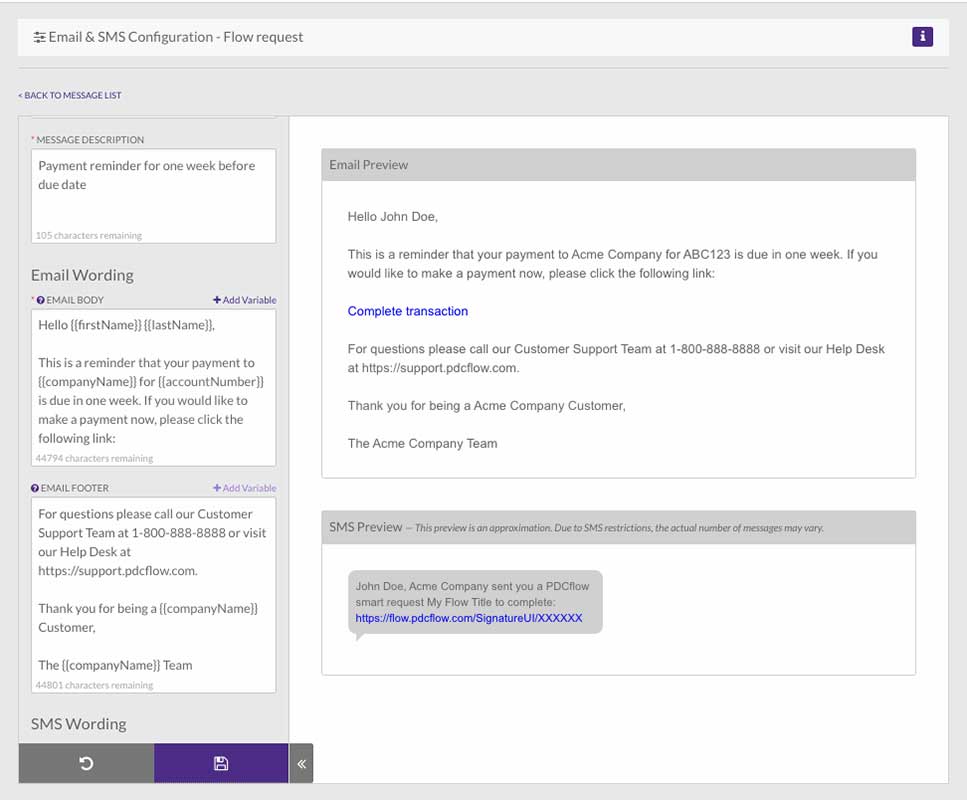
SET UP A FLOW TEMPLATE THAT SENDS A SECURE EMAIL AND INCLUDES THE BELOW MESSAGE
Hello {{firstName}} {{lastName}},
This is a reminder that your payment to {{companyName}} for {accountNumber}} is due in one week. If you would like to make a payment now, please click the following link:
[Complete transaction]For questions please call our Customer Support team at 1-800-888-8888 or visit our helpdesk at (insert url).
Thank you for being a {{companyName}} customer,
The {{companyName}} Team
SECOND PAYMENT REMINDER: ON PAYMENT DUE DATE
Your customer isn't late paying you, so again, this is a friendly reminder. They may not remember receiving the initial invoice or account statement.
When using our Flow Technology for this friendly payment reminder, send them a copy of the invoice or billing statement and a link to make the payment.
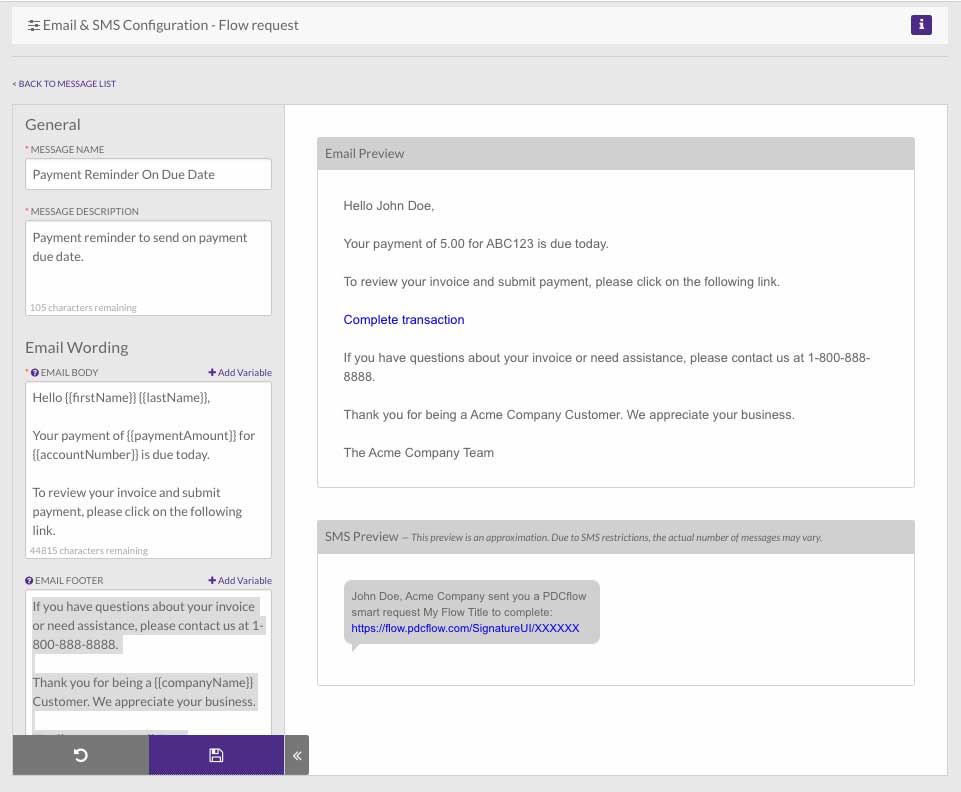
SET UP A FLOW TEMPLATE THAT SENDS A SECURE EMAIL AND INCLUDES THE BELOW MESSAGE
Hello {{firstName}} {{lastName}},
Your payment of {{paymentAmount}} for {{accountNumber}} is due today.
To review your invoice and submit payment, please click on the following link:
If you have questions about your invoice or need assistance, please contact us at 1-800-888-8888.
Thank you for being a {{companyName}} customer. We appreciate your business.
The {{companyName}} Team
OVERDUE PAYMENT REMINDER: ONE WEEK AFTER PAYMENT DUE DATE
Your customer is now late and you should address that directly in your message. If you have late fees in your agreement terms, remind them of that.
The example Flow template below includes the invoice or account statement document (in case they cannot find the previous ones that were sent) and a secure payment request.
You can also include your customer service or AR department contact number so your customer has the option to call you directly if needed.
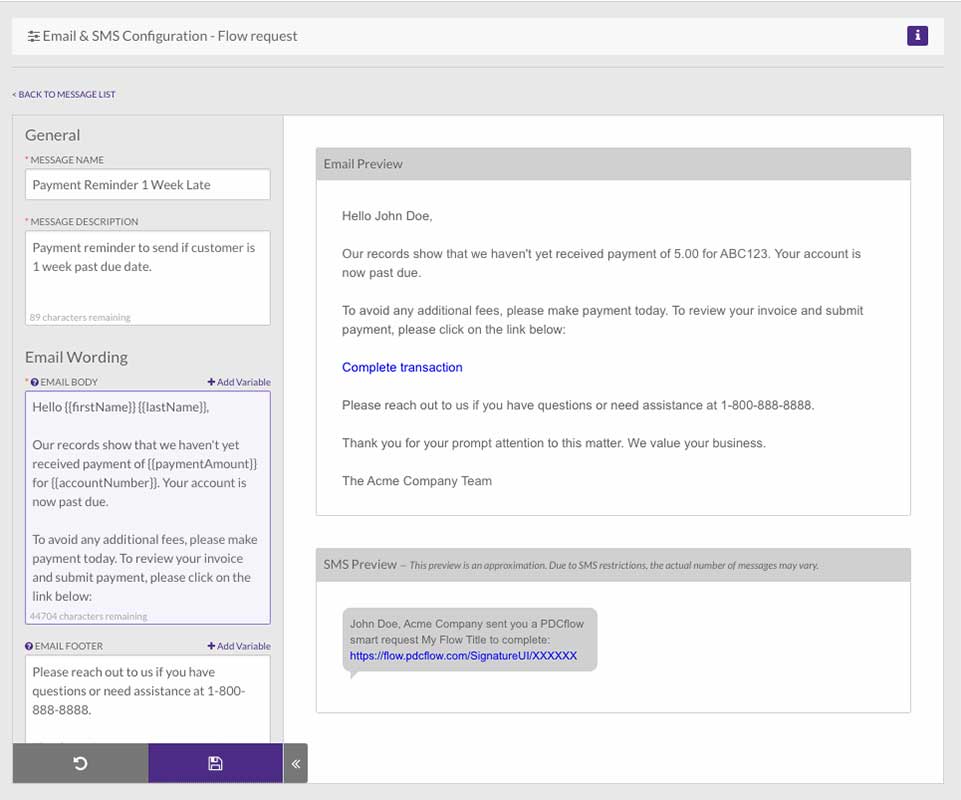
SET UP A FLOW TEMPLATE THAT SENDS A SECURE EMAIL AND INCLUDES THE BELOW MESSAGE
Hello {{firstName}} {{lastName}},
Our records show that we haven't yet receive payment of {{paymentAmount}} for {{accountNumber}}. Your account is now past due.
To avoid any additional fees, please make payment today. To review your invoice and submit payment, please click on the following link:
[Complete transaction]Please reach out to us if you have questions or need assistance at 1-800-888-8888.
Thank you for your prompt attention to this matter. We value your business.
The {{companyName}} Team
OVERDUE PAYMENT REMINDER: 30 DAYS AFTER PAYMENT DUE DATE
Your customer is now seriously delinquent and you should address this directly in your message. If you have late fees in your agreement terms, remind them of that.
The example Flow template below includes the invoice or account statement document and a secure payment request.
You can also include your customer service or AR department contact number so your customer has the option to call you directly if needed.
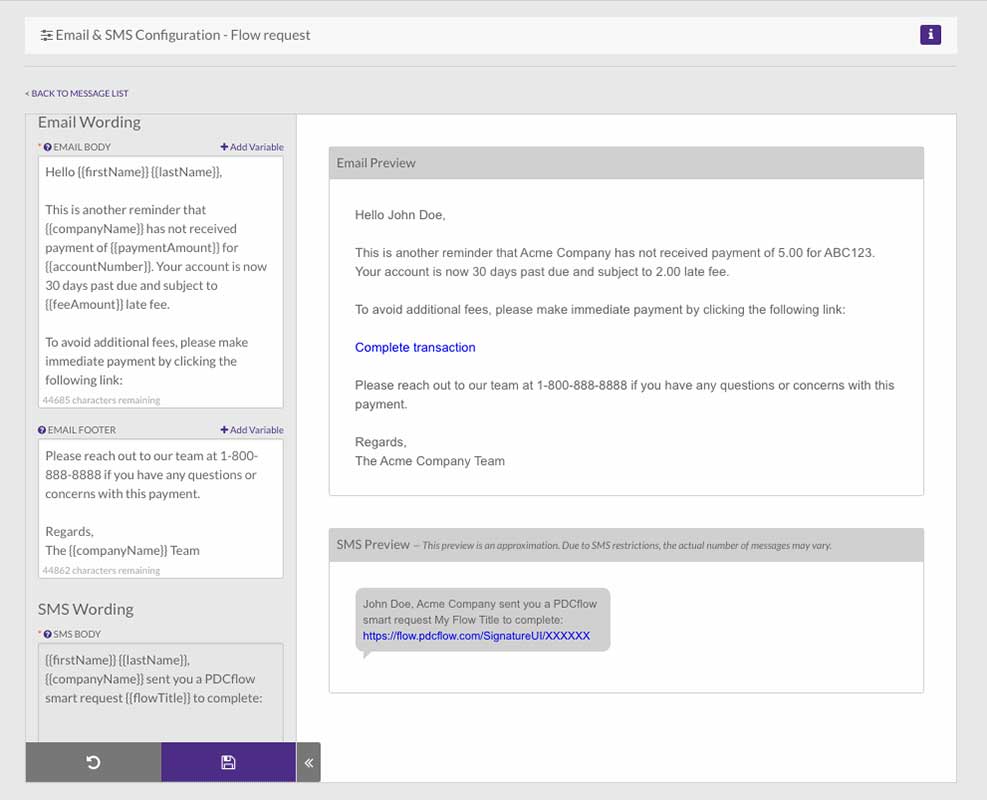
SET UP A FLOW TEMPLATE THAT SENDS A SECURE EMAIL AND INCLUDES THE BELOW MESSAGE
Hello {{firstName}} {{lastName}},
This is another reminder that {{companyName}} has not received payment of {{paymentAmount}} for {{accountNumber}}. Your account is now 30 days past due and subject to {{feeAmount}} late fee.
To avoid additional fees, please make immediate payment by clicking on the following link:
[Complete transaction]Please reach out to our team at 1-800-888-8888 if you have any questions or concerns with this payment.
Regards,
The {{companyName}} Team
AFTER 30 DAYS
After 30 days, if you have not received payment or any communication from your customer about the overdue invoice, it is time to pick up the phone and call them directly. This is where you need to do some problem-solving.
There can be many reasons that making a timely payment falls between the cracks. For example, what if your point of contact has changed and emails are not going to the correct person anymore?
Using direct communication may be necessary to resolve some unforeseen payment issues.
Save time, save money, and create a better customer experience. Send payment communications through email and text. Talk to a PDCflow Payment Expert today.

